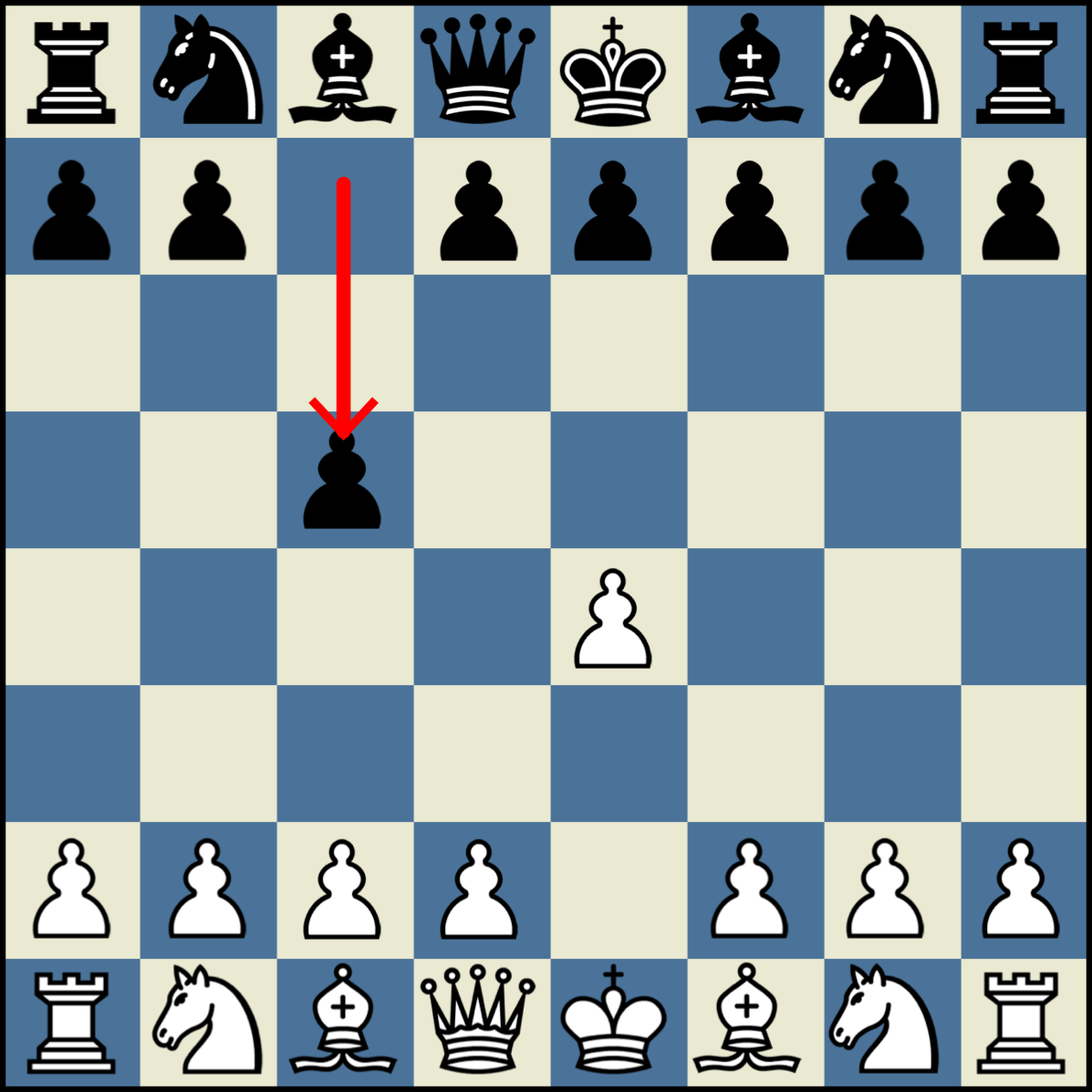Most Common Chess Openings

Start exploring chess openings with these books
Chess Openings Explained
General Explanation
A chess opening or simply an opening is the initial stage of a chess game. It usually consists of an established theory and later in we will explore some of the most popular.
The other phases are the middlegame and the endgame. Many opening sequences have standard names such as the "Italian Game" etc.
Standard chess opening moves are called "book moves" or simply put "book. Those that stray away from the standard are called "out of book".
Years out of chess players carriers are devoted to the study of existing and potential new sequence of moves in the opening which are referred to as a theoretical novelty chess openings.
Common Aims In Opening Play
Development: one of the main aims of the opening is to move the pieces on useful squares where they will have an impact on the game.
Control of the center: allows pieces to be moved to any part of the board relatively easily, and can also have a cramping effect on the opponent.
King safety : reduce vulnerability.
Prevention of pawn weakness :avoid the creation of pawn weaknesses such as isolated, doubled and backward pawns, pawn islands, etc.
Piece coordination: ensure that they are working harmoniously towards the control of key squares.
Create comfortable positions for the player that are uncomfortable for the opponent.

Let Us Learn About:
Queen's Gambit
Ruy Lopez (Spanish Game)
Sicilian Defense
French Defense
Caro-Kann Defense
Queen's Gambit
The Queen’s Gambit consists of three moves:
- White moves the queen’s pawn two spaces forward.
- Black responds by moving her own queen pawn two spaces forward.
- Finally, white replies by bringing her queenside bishop’s pawn forward two spaces.
Using standard chess notation, this is:
1. d4 d5
2. c4

Historical background:
- Like all gambits, it begins with an offer to sacrifice material. In this case, white offers a wing pawn in exchange for better control of the center. It’s called the Queen’s Gambit because it begins with the queen’s pawn (as opposed to the King’s Gambit, which starts with 1.e4).
- Many chess aficionados will tell you that the Queen’s Gambit isn’t considered a “true gambit,” because black usually can’t hold the pawn it takes, making it more of a trade with a slight delay. That said, some of the responses to the Queen’s Gambit do offer opportunities for true gambits on both sides.
Ruy Lopez ( Spanish Game)
Basics of The Spanish Game:
- White moves his King’s Pawn two squares
- Black moves his King’s pawn two squares forward
- White then attacks blacks pawn by placing the Knight on f3
- Black then defends this pawn with his Queenside Knight
- White then attacks this Knight with his bishop
Using standard chess notation, this is:
1. e4 e5
2. Nf3 Nc6
3. Bb5

Historical background:
- The Ruy Lopez (also known as the Spanish Game) is named after the Spanish priest who analyzed this opening in 1561.
- Nearly half a millennium later, the Ruy is now one of the most popular chess openings at all levels.
- Numerous variations have been deeply studied, and a wide variety of strategic plans are available to both White and Black.
Sicilian Defense
Basics of The Sicilian Defense:
- First, White has to move the King’s pawn two squares (1. e4)
- Then, Black should respond by moving the light-squared Bishop’s pawn also two squares (1… c5)
Using standard chess notation, this opening starts with:
1.e4 c5

Historical background:
- The Sicilian Defence was analysed by Giulio Polerio in his 1594 manuscript on chess,[8] though he did not use the term 'Sicilian Defence'.
- In 1813, the English master Jacob Henry Sarratt effectively standardised his English translation of the name of this opening as 'the Sicilian Defence', referring to an old Italian manuscript that used the phrase il gioco siciliano ('the Sicilian game').
- The great French player and theoretician André Danican Philidor opined of the Sicilian in 1777, "This way of opening the game ... is absolutely defensive, and very far from being the best ... but it is a very good one to try the strength of an adversary with whose skill you are unacquainted."
French Defense
Basics of The French Defense:
- The idea behind the French Defense is that Black plays e6 to prepare to advance d7-d5, in order to immediately challenge White’s pawn on e4.
Using standard chess notation, this opening starts with:
1.e4 e6
2.d4 d5

Historical background:
- The French Defense is named after a match played by correspondence between the cities of London and Paris in 1834 (although earlier examples of games with the opening do exist).
- It was Jacques Chamouillet, one of the players of the Paris team, who persuaded the others to adopt this defense.
Caro-Kann Defense
Basics of The Caro-Kann Defense:
- The Caro–Kann is a common defense against the King's Pawn Opening and is classified as a "Semi-Open Game" like the Sicilian Defense and French Defense, although it is thought to be more solid and less dynamic than either of those openings.
- It often leads to good endgames for Black, who has the better pawn structure.
Using standard chess notation, this opening starts with:
1. e4 c6

Historical background:
- The opening is named after the English player Horatio Caro and the Austrian player Marcus Kann who analysed it in 1886.
- Kann scored an impressive 24-move victory with the Caro–Kann Defence against German-British chess champion Jacques Mieses at the 4th German Chess Congress in Hamburg in May 1885.
- The play went:
1.e4 c6 2.d4 d5 3.e5 Bf5 4.Bd3 Bxd3 5.Qxd3 e6 6.f4 c5 7.c3 Nc6 8.Nf3 Qb6 9.0-0 Nh6 10.b3 cxd4 11.cxd4 Nf5 12.Bb2 Rc8 13.a3 Ncxd4 14.Nxd4 Bc5 15.Rd1 Nxd4 16.Bxd4 Bxd4+ 17.Qxd4 Rc1 18.Kf2 Rxd1 19.Qxb6 axb6 20.Ke2 Rc1 21.Kd2 Rg1 22.g3 Kd7 23.a4 Rc8 24.b4 Rcc1 0–1
In the fascinating and ever growing world of chess, grandmasters who were once simple players and players aiming to become grandmaster alongside those who simply play the game for fun study the opening aspects of chess thoroughly and for a long time, these five were just a fun and brief introduction into the complicated and intriguing world of chess. Join us on Chess Universe and start your chess journey today!




